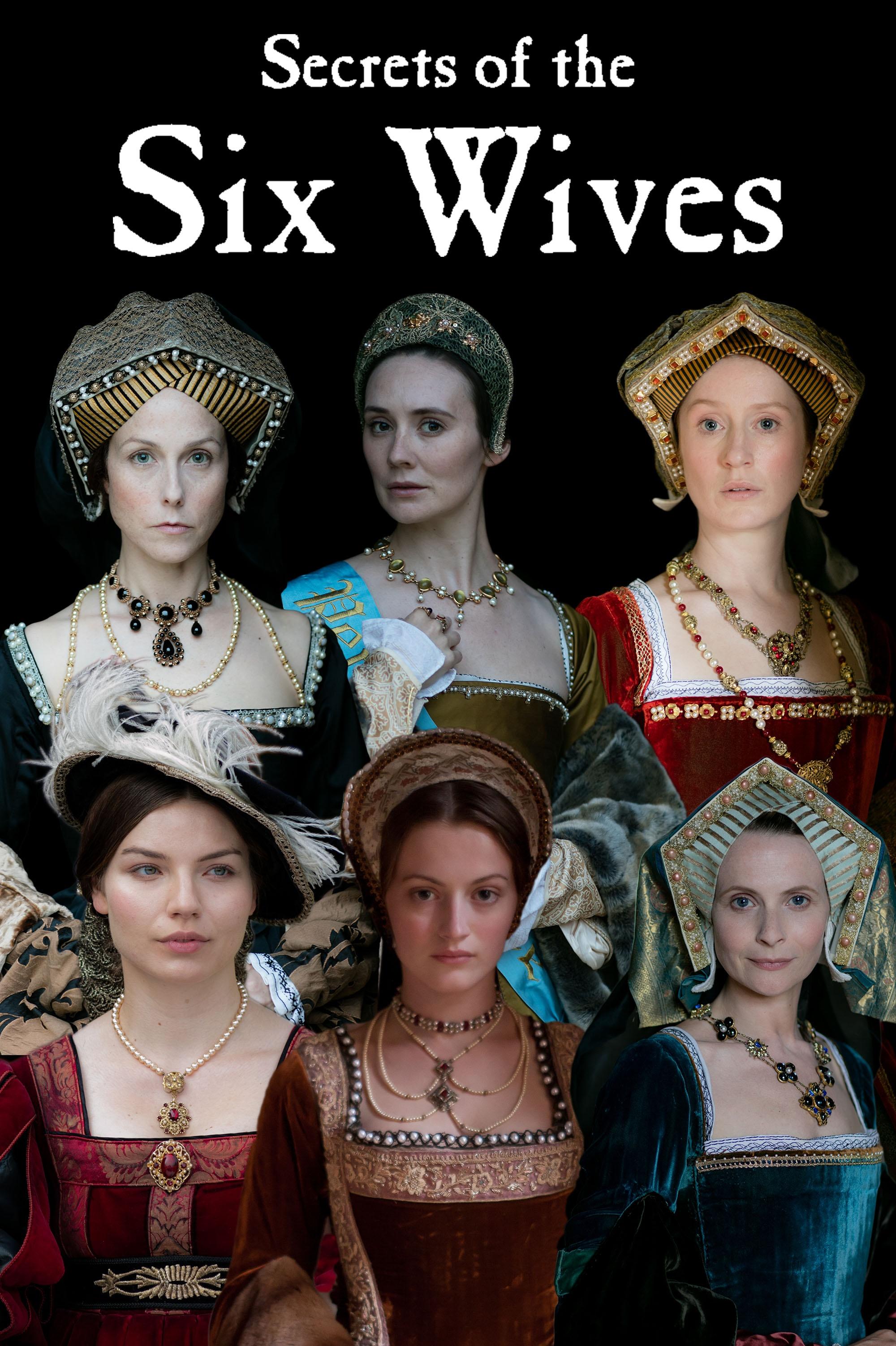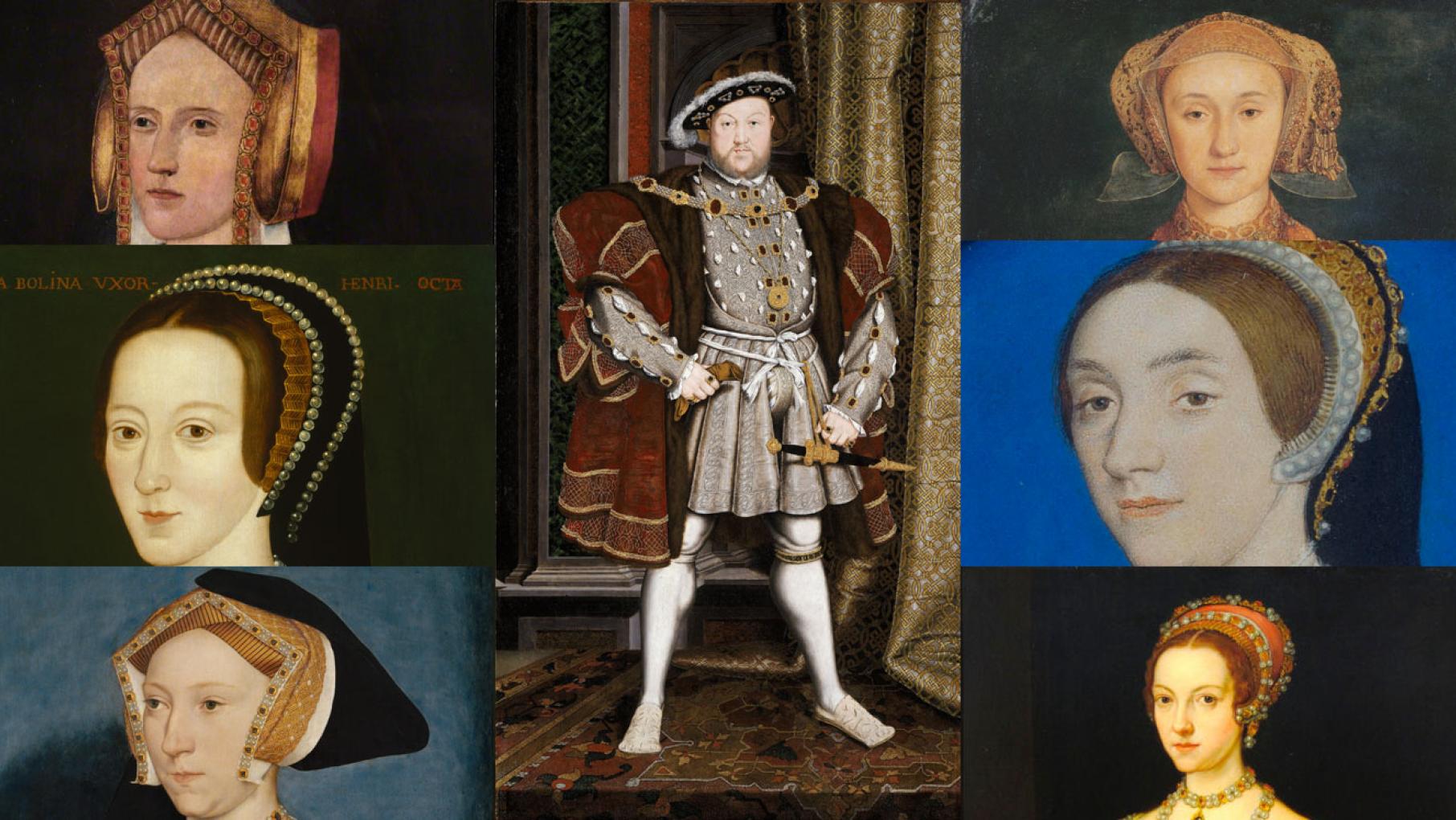Exploring The Enigma: Who Was The 5th Wife In Six?
Have you ever come across a question that just makes you pause, making you wonder if there's a deeper meaning hiding beneath the surface? It's a bit like trying to solve a riddle, where the answer isn't immediately obvious, and you need to look at all the little clues. The question, "Who was the 5th wife in six?", is that sort of puzzle, especially when we consider the particular source material we're working with. It's not always about finding a straightforward historical figure, you know, sometimes it's about how we interpret language itself.
When we look at the provided text, it's clear we're not dealing with a history book or a biographical account. Instead, what we have is a rather interesting collection of thoughts and observations about language, numbers, and even some very specific everyday phrases. So, to figure out who the "5th wife in six" might be, we're going to have to think a little differently, kind of like piecing together a mosaic from seemingly unrelated bits. It's a bit of a linguistic adventure, really, and it means we'll be exploring how words and numbers behave in various situations.
This journey into the meaning of "5th" and "six" within our specific reference point is, in a way, about how context shapes everything. It's about seeing how a simple number or a common word can take on different shades of meaning depending on where it shows up. We'll be looking at how ordinal numbers work, how dates are expressed, and even how certain phrases become widely recognized. It's quite fascinating, actually, how language can be so flexible and, yet, sometimes a little puzzling. So, let's just see what we can discover together.
Table of Contents
- Unpacking the 'Fifth': More Than Just a Number
- The 'Six' Connection: A Closer Look at Context
- Beyond the Obvious: What Does it All Mean?
- Understanding Ordinal Numbers and Context
- Frequently Asked Questions (FAQs)
- Conclusion
Unpacking the 'Fifth': More Than Just a Number
When we consider the idea of the "5th" from our reference text, it becomes pretty clear that this number shows up in a bunch of different ways, not just as a simple count. For example, there's the phrase "On the 5th of november," which is, you know, a very common way to talk about dates. It's practically just removing the word "day" from the reference, as in "on the 5th (day) of november." It's used everywhere, and even though it could be, well, a little informal, it works just fine. This shows how "5th" can pinpoint a specific moment in time, a very particular point on a calendar.
Then, we also see "5th may would be the most traditional way to write this date." This again highlights the use of "5th" in dates, but it also hints at tradition and common practice in writing. It's interesting how certain ways of writing dates become standard, and others, like using "of" in a written date, are seen as "extremely archaic constructions such as legal contracts signed and witnessed." So, the "5th" here isn't just a number; it carries a sense of formality or informality, depending on how it's used in a date format. It's really quite a subtle thing, how these little numerical markers carry so much weight.
Another very distinct use of "5th" pops up with the phrase "plead the fifth or take the fifth." This is, you know, a very specific legal concept, and it's widely recognized, especially "thanks to the prevalence of us media." This particular "5th" has nothing to do with counting or dates; it's about a right, a legal protection. It means someone is choosing not to answer a question because their answer might incriminate them. So, in this context, the "5th" is a direct reference to the Fifth Amendment of the U.S. Constitution. It's a powerful example of how a number can become shorthand for a complex legal idea, which is, honestly, quite a clever bit of linguistic evolution.
Our text also mentions "1st = primary 2nd = secondary 3rd = tertiary 4th = quaternary 5th =." This sequence shows "5th" as part of a formal naming system for levels or stages. While the text doesn't complete the "5th =" part, the pattern suggests "quinary" or "quintary." This is a more academic or classification-based use of "5th," placing it within a structured progression. It's like a scientific or formal way of categorizing things, which is, you know, a very different vibe from talking about dates or legal rights. So, the "5th" is really quite versatile in how it's applied across various situations, wouldn't you say?
The 'Six' Connection: A Closer Look at Context
Now, let's turn our attention to the "six" part of the question. Interestingly, the provided text doesn't actually use the word "six" directly in a numerical sense. However, it does contain a very similar-sounding phrase that might be the key to this part of the puzzle: "i hit the third base or i hit the second base (sex related)." This is where the linguistic interpretation gets, well, a little more abstract. If we consider that "six" might be a phonetic or conceptual link to "sex," then the question "Who was the 5th wife in six?" could be a very metaphorical way of asking about stages within a relationship context, or even just about how we talk about such things.
The phrases "third base" and "second base" are, as the text points out, "sex related" euphemisms. These are commonly understood slang terms that use baseball analogies to describe different levels of intimacy. So, if we follow this line of thinking, the "5th wife in six" isn't a literal person, but perhaps a metaphorical "fifth stage" or "fifth level" within a sequence of "sex related" interactions. It's a bit of a stretch, perhaps, but it's one of the only ways to connect "six" (as "sex related") to the provided text. It really highlights how language can be used in indirect and suggestive ways, doesn't it?
This interpretation suggests that the question isn't about a historical figure at all, but rather a playful or conceptual query about the progression of relationships or intimacy, using numerical stages. The "wife" part would then fit into the broader context of a committed relationship, which might be the "final base," so to speak. It's a fascinating way to look at how numbers and everyday phrases can be twisted and turned to create new meanings, especially in colloquial speech. So, in this light, the "5th wife in six" becomes a linguistic riddle, rather than a factual one, which is, you know, quite a unique challenge to unravel.
Beyond the Obvious: What Does it All Mean?
When we look at the question "Who was the 5th wife in six?" through the lens of our provided text, it becomes pretty clear that a straightforward answer about a historical figure just isn't there. The text is, to be honest, a rather eclectic mix of observations about language, time, and even pool table restoration services. For instance, we have bits about "the definitive list of pool table restoration companies near your location" and how to "revive your antique and vintage pool tables." These parts of the text are completely disconnected from any notion of "wives" or "numerical sequences of relationships." This disconnect is actually quite telling, you know, because it forces us to reconsider the very nature of the question.
The true meaning of "Who was the 5th wife in six?" in this specific context seems to be about the challenge of finding coherence in disparate information. It's like being given a jigsaw puzzle where half the pieces belong to a different picture entirely. The question itself, therefore, becomes a test of how we interpret meaning when the source material is so varied and, honestly, a bit random. It makes you think about how we usually rely on clear context to understand things, and what happens when that context is, well, pretty much absent. It's a valuable lesson in linguistic flexibility, I suppose.
So, the "5th wife in six" isn't a person you can look up in a history book, at least not based on "My text." Instead, it's a prompt to explore the various ways the number "5th" is used (as an ordinal, in dates, in legal terms, in formal sequences) and how "six" might be interpreted (as "sex related" slang). The "wife" part then just provides a conceptual framework for a relationship or intimacy, which ties into the "sex related" phrases. It's a very abstract way of looking at it, but it's the only way to make sense of the question given the peculiar reference material. It just goes to show, doesn't it, how much fun language can be when you really start to pick it apart?
Understanding Ordinal Numbers and Context
Our text gives us a pretty good look at how ordinal numbers work, showing us that they're not just about counting in a simple "one, two, three" fashion. We see examples like "9th 3rd 301st," which are just everyday ways we mark positions in a sequence. It's fascinating, really, how we use these "special sounds" to denote order rather than quantity. When we write "twentieth century using an ordinal numeral," the "th" part is typically not in superscript, even though some might think it should be. This highlights a common point of confusion in writing, but it also shows how conventions develop and become widely accepted, you know, over time.
The text also touches on how these numbers are used in dates, like "5th may." This is a very traditional way to write dates, and it's something we encounter constantly. The removal of "day" from "5th (day) of november" is a practical example of how language streamlines itself for efficiency. It's a small change, but it's used everywhere, and it just makes communication a little smoother. This kind of linguistic shorthand is, arguably, a testament to how adaptable our language is, always finding ways to be more concise while still getting the message across.
Then there's the more formal classification system: "1st = primary 2nd = secondary 3rd = tertiary 4th = quaternary 5th =." This sequence shows how ordinal numbers are used in a very structured, almost scientific way, to name different levels or categories. It's a departure from casual conversation or date writing, illustrating the breadth of applications for these numerical descriptors. This really goes to show that an ordinal number like "5th" isn't just a static label; its meaning and function shift quite dramatically depending on the specific context it finds itself in. It's a bit like a chameleon, adapting to its surroundings, wouldn't you say?
Even the mention of "midnight is written as 12am which would imply that it's in the morning" touches on how numerical notations can be "interpreted incorrectly." This isn't strictly about ordinal numbers, but it speaks to the broader theme of how we assign meaning to numerical expressions and how misunderstandings can arise. It reinforces the idea that precision in language and notation is very important, especially when dealing with concepts like time, which, you know, can be quite tricky. All these examples from our text, in a way, highlight the rich and sometimes complex tapestry of how we use numbers to describe the world around us.
Frequently Asked Questions (FAQs)
What does "plead the fifth" really mean?
The phrase "plead the fifth" means a person is exercising their right, under the Fifth Amendment of the U.S. Constitution, to refuse to answer questions if their answers might incriminate them. It's a legal protection that allows individuals to avoid self-incrimination, and it's widely recognized, especially due to its frequent appearance in media.
How do ordinal numbers like "5th" work in everyday language?
Ordinal numbers, like "5th," "3rd," or "9th," tell us the position of something in a sequence rather than a quantity. They're used all the time in everyday language, for things like dates ("5th of November"), centuries ("twentieth century"), or even just listing items in order. They add a sense of sequence or rank to what we're talking about.
What's the meaning behind phrases like "hitting third base" in conversation?
Phrases like "hitting third base" are commonly understood euphemisms that use baseball analogies to describe different stages of intimacy in a relationship. These are examples of slang where numbers are used metaphorically to represent a progression or level within a particular context. It's a way of talking about sensitive topics indirectly, which is, you know, pretty common in language.
To learn more about how language shapes our understanding of the world, feel free to explore other articles on our site. You might also find this page interesting: exploring the nuances of everyday phrases.
For more on how language evolves and adapts, you could check out resources like the Merriam-Webster dictionary's explanation of ordinal numbers. It's a good starting point for, you know, understanding the basic building blocks of numerical language.
Conclusion
So, after looking closely at "My text," it seems the question "Who was the 5th wife in six?" isn't about finding a specific historical figure at all. Instead, it's a clever puzzle, inviting us to explore how numbers and words can take on so many different meanings depending on their context. We've seen how "5th" can refer to dates, legal rights, or even a step in a formal sequence. And the "six" part, well, that seems to point towards a playful interpretation of "sex related" phrases, linking to ideas of progression in relationships. It's pretty interesting, how a simple question can lead us down such varied linguistic paths, isn't it?
This whole exercise really highlights how important context is when we're trying to figure out what something means. Without the right background, a question that seems straightforward can become quite a riddle. It also shows us how flexible and, honestly, how much fun language can be when you start to pull it apart and look at all its different layers. It's a bit like a treasure hunt, where the real prize is the deeper understanding of how words work. So, the next time you encounter a puzzling question, maybe take a moment to consider the context, because, you know, the answer might just be hiding in plain sight, but in a very unexpected way.
Keep thinking about how language works in your daily life. It's a truly powerful tool, and the more we understand its quirks, the better we can communicate and understand the world around us. Maybe try to notice how ordinal numbers are used in different settings, or how slang terms evolve. It's a fun way to, well, just keep your mind sharp and your curiosity buzzing.

Wife of The Six, 1832 Stock Photo - Alamy

True History Behind 'Six' The Musical Six Wives Henry VIII, 50% OFF

Secrets of the Six Wives | WTTW Chicago